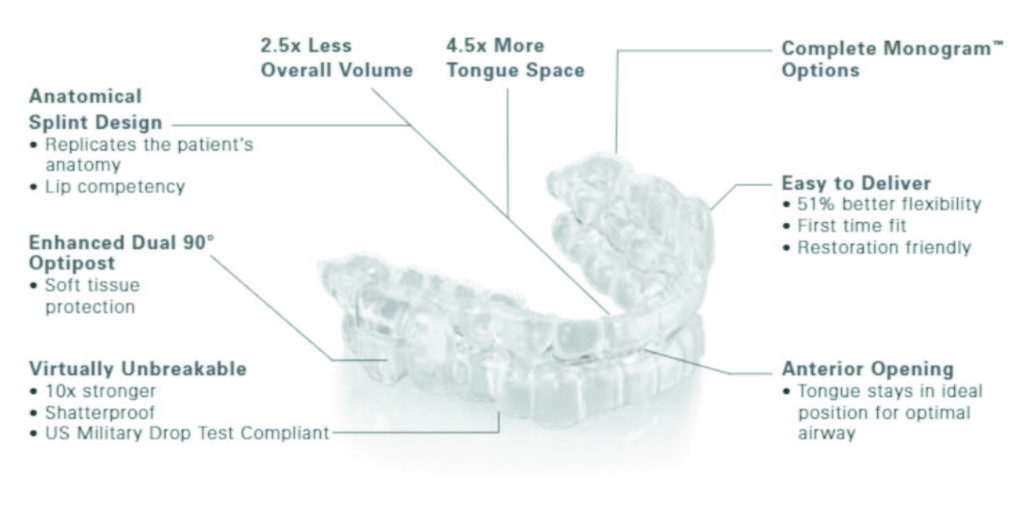Dr. Mark T. Murphy discusses efficacy, compliance and the ProSomnus EVO device.
 by Mark T. Murphy, DDS, D.ABDSM
by Mark T. Murphy, DDS, D.ABDSM
Dental Sleep Medicine stakeholders argue that focusing on a single metric to define success could be a costly mistake. Patient preference of treatment, quality of life, and satisfaction may be as, if not – more important – than a simple numerical reduction of AHI scores. The Agency for Healthcare Research and Quality (AHRQ) was asked by the Center for Medicare Services to investigate the efficacy and effectiveness of CPAP therapy. Along with challenging efficacy, their draft also concluded that, “insufficient evidence exists to assess the validity of AHI as a surrogate or intermediate outcome for long-term clinical outcomes”.
In the movie, Moneyball (based on Michael Lewis’s book of the same name), Brad Pitt harnessed the power of previously ignored statistics to build a world series team on a shoestring budget. No longer were the scouting reports and traditional triple crown data sets (batting average, homeruns, and RBIs) the norm. Instead, subtle yet important metrics guided player selection. On base percentage, total bases, and other arcane data were used. They made it to the World Series. Perhaps it is time to apply “Moneyball” principles to DSM. Let’s evaluate other key performance indicators that, if managed better, could win the world series for DSM and our patients.

Patient Satisfaction
Patient preference of OAT over PAP speaks to the PICO questions (patient population, intervention, comparison and outcomes) in the AASM/AADSM joint guidelines. Furthermore, a recent poster and abstract published by the AASM demonstrated patient preference of ProSomnus’ EVO over predicate devices designed for comfort (soft liners and printed nylon) as well as PAP therapy. It should be noted, these same patients liked their predicate devices but 96% strongly preferred EVO.
Quality of Life
A lower AHI/ODI score in the absence of improved QOL may also fall short of meaningful deliverables. Patients do not present with complaints of SPO2 desaturations or low nadir. They complain of poor sleep, snoring, and other QOL issues. Ignoring how the patient feels subjectively can undermine clinical success.

Side Effects
A recent AADSM poster discussed the reduced ‘dose’ of mandibular advancement required by ProSomnus EVO. Less advancement dose may result in less TMD pain, muscle challenges, and easier morning realignment. Older legacy devices may function similary by advancing the mandible to open the airway but they do so in a different manner with greater risks. You can drive from New York to LA in a 10 year old subcompact or a luxury SUV. The goal is the same, but how you feel will be very different.
Efficacy and Compliance
Efficacy and compliance combine to produce effectiveness. The AADSM poster and abstract on minimal therapuetic dose also tracked and evaluated compliance and potential discontinuation of use. Every patient in the trial was still wearing the device ~7 hours per night, 7 nights per week. OAT adherence is the trump card against the better efficacy of PAP therapy.
The ProSomnus AI designs and robotic manufacturing advantages produce better outcomes that advance the mission of improved patient care.
Read more about the ProSomnus EVO oral appliance and its FDA clearance here: https://dentalsleeppractice.com/industry-news/prosomnus-evotm-oral-appliance-therapy-device-receives-fda-clearance-for-the-treatment-of-obstructive-sleep-apnea-and-snoring/





 Mark T. Murphy, DDS, D.ABDSM, is an American Board of Dental Sleep Medicine Diplomate and has practiced in the Rochester area for over 35 years. He is the Lead Faculty for Clinical Education at ProSomnus Sleep Technologies, Principal of Funktional Sleep, serves on the Guest Faculty at the University of Detroit Mercy School of Dentistry and as a Regular Presenter at the Pankey Institute. He has served on the Boards of Directors of the Pankey Institute, National Association of Dental Laboratories, the Identalloy Council, the Foundation for Dental Laboratory Technology, St. Vincent DePaul’s Dental Center and the Dental Advisor. He lectures internationally on Leadership, Dental Sleep Medicine, TMD, Treatment Planning, and Occlusion.
Mark T. Murphy, DDS, D.ABDSM, is an American Board of Dental Sleep Medicine Diplomate and has practiced in the Rochester area for over 35 years. He is the Lead Faculty for Clinical Education at ProSomnus Sleep Technologies, Principal of Funktional Sleep, serves on the Guest Faculty at the University of Detroit Mercy School of Dentistry and as a Regular Presenter at the Pankey Institute. He has served on the Boards of Directors of the Pankey Institute, National Association of Dental Laboratories, the Identalloy Council, the Foundation for Dental Laboratory Technology, St. Vincent DePaul’s Dental Center and the Dental Advisor. He lectures internationally on Leadership, Dental Sleep Medicine, TMD, Treatment Planning, and Occlusion.